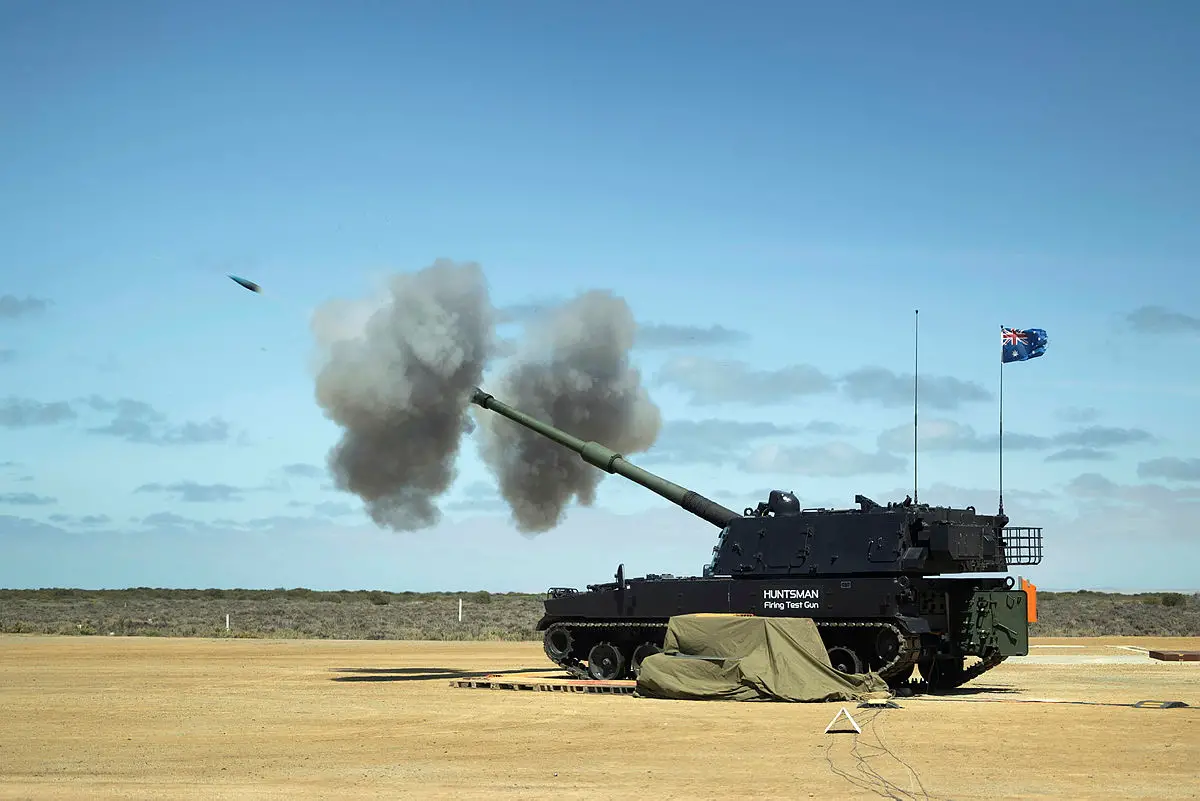Hanwha Aerospace has initiated the assembly process for Australia’s inaugural Huntsman AS9 self-propelled howitzer (SPH) and AS10 armored ammunition resupply vehicle, at its facility in Changwon, South Korea. Commencing the “mate” process on March 28 at Hanwha Aerospace’s Plant 3, this marks a significant milestone in Australia’s defense capabilities, as outlined in the company’s official statement. The commencement ceremony, attended by key stakeholders including production managers, engineers from Hanwha Aerospace and Hanwha Defence Australia (HDA), and representatives from the Australian Capability Acquisition and Sustainment Group (CASG), highlighted the beginning of production. The journey to this point traces back to June 2010 when the K9 was identified as the preferred bidder for the LAND 17 program. However, unforeseen challenges, such as the redirection of project funds for flood restoration in Queensland in 2011 and subsequent cancellation in May 2012, stalled progress. It wasn’t until May 2019, amidst preparations for the Federal Election, that Prime Minister Scott Morrison announced the acquisition of 30 K9 howitzers and associated support equipment, without a specified timeline for procurement.

Fast forward to September 2020, when Minister for Defense Linda Reynolds unveiled a request for tender to domestically manufacture 30 K9s under the Land 8116 Phase 1 Protected Mobility Fires initiative. The tender, exclusively offered to preferred supplier Hanwha Defense Australia, entails the construction and maintenance of 30 K9s and 15 K10s, alongside their support systems, at Hanwha’s Geelong facility. The Australian variant, AS9 Huntsman, draws inspiration from the Norwegian K9 VIDAR, featuring contemporary modifications while retaining the options outlined in 2010. December 2021 witnessed the formalization of a contract between the Capability Acquisition and Sustainment Group (CASG) of Australia and Hanwha Defense Australia for the licensed production of 30 AS9s and 15 AS10 AARVs at the Geelong facility in Victoria. With construction slated to commence in Q2 2022, the contract, valued at approximately $788 million, also encompasses an MOU for defense cooperation between Australia and South Korea. Manufacturing is projected to kick off in Q4 2024.

February 2022 marked a significant milestone as Hanwha Defense Australia identified a site spanning 150,000 m2, including a 32,000 m2 manufacturing facility, a 1.5 km long track, and various test and R&D sites, for its inaugural overseas factory, dubbed H-ACE (Hanwha Armoured Vehicle Centre of Excellence) in Geelong. The endeavor, anticipated to generate 300 employment opportunities for local specialists, commenced construction on April 8 and is slated for completion within two years. March 2022 saw Hanwha Defense strike a $67 million deal with Kongsberg for the installation of C4 systems for Australian vehicles. The collaboration involves the supply of the Integrated Combat Solution (ICS) and ODIN fire support systems through Kongsberg Australia. Subsequently, in July, Hanwha Systems inked a contract with Hanwha Defense Australia to provide Health and Usage Monitoring Systems (HUMS) and Situational Awareness Systems (SAS) for AS9s and AS10s, totaling 20.8 billion KRW.

Further bolstering the Huntsman’s capabilities, Hanwha secured a $5 million deal with Safran in October 2022 for the supply of 32 MINEO DFSS, enhancing direct firing capability. Additionally, in January 2023, a $3.5 million contract was signed with German company AirSense Analytics for the provision of a CBRN system for the vehicles. April 2023 witnessed Australia’s withdrawal from Land 8116 Phase 2, aligning with the new government’s strategic focus on M142 HIMARS, air, and naval assets. However, May 2023 marked a significant milestone as Israeli firm Plasan successfully completed protection tests for the program. The actual production of AS9 and AS10 commenced in June 2023. With each milestone, including the selection of Epsilor for NATO standard battery supply, the Huntsman project solidifies its position as a cornerstone of Australia’s defense modernization efforts, promising enhanced capabilities for the ADF in the years to come. While two AS9s and one AS10 are set to be built and supplied by South Korea, the remainder will be manufactured in Australia.















